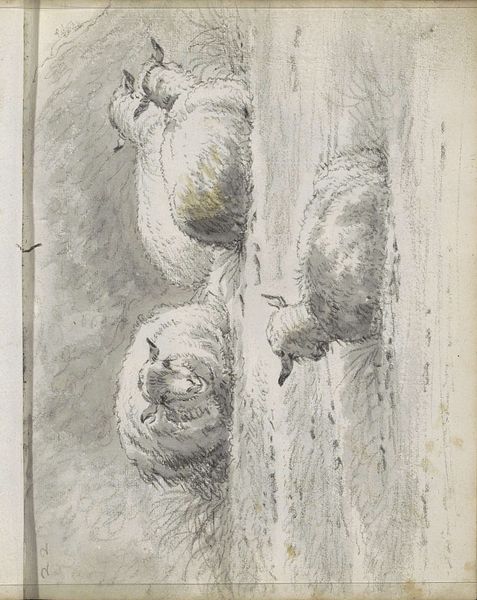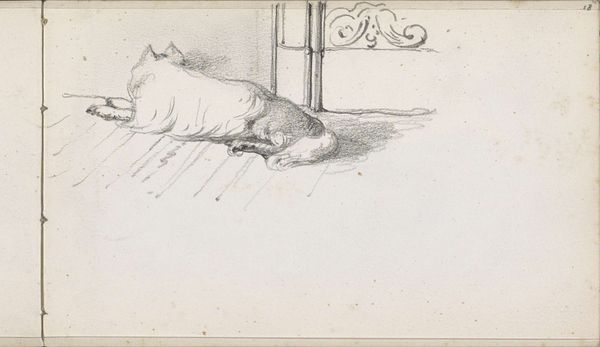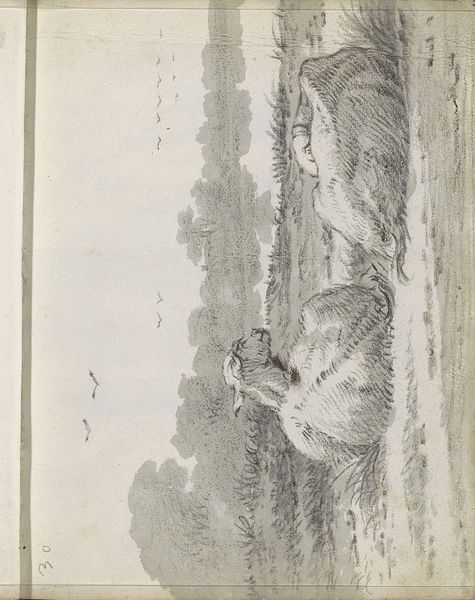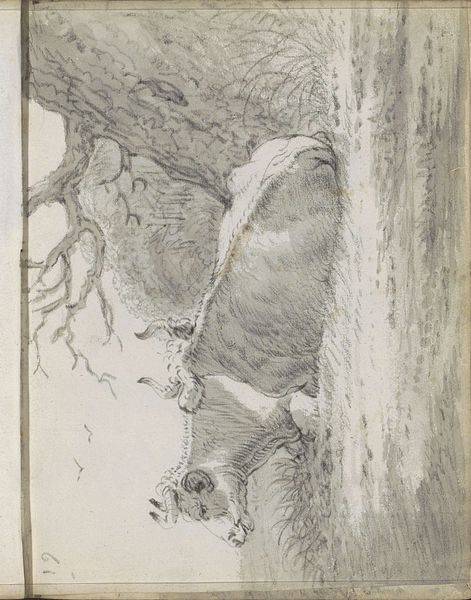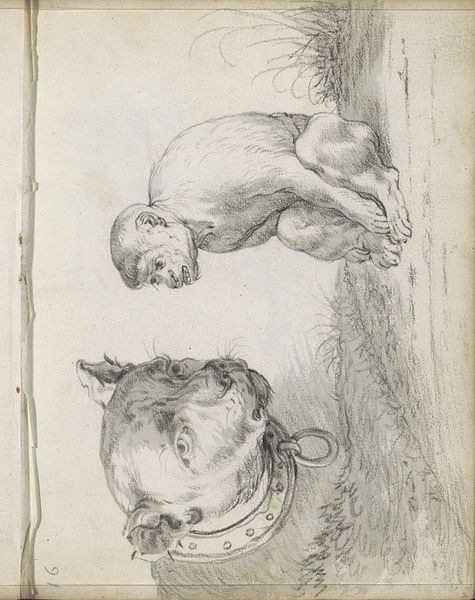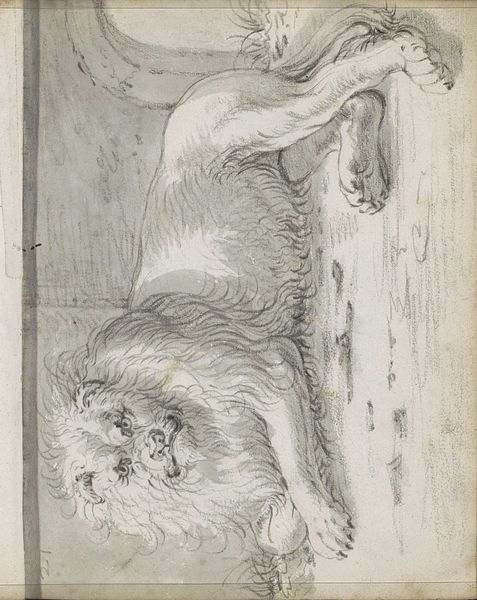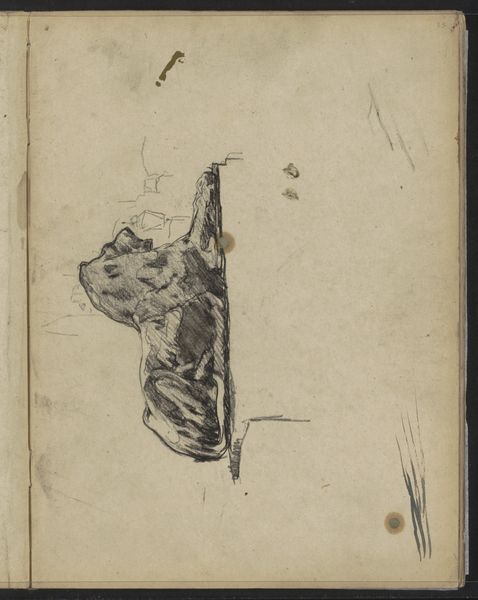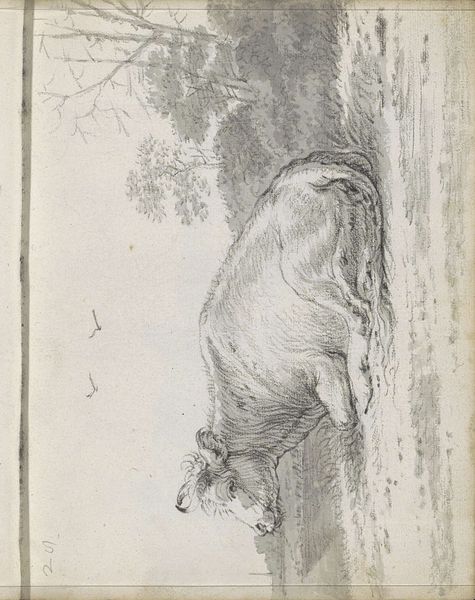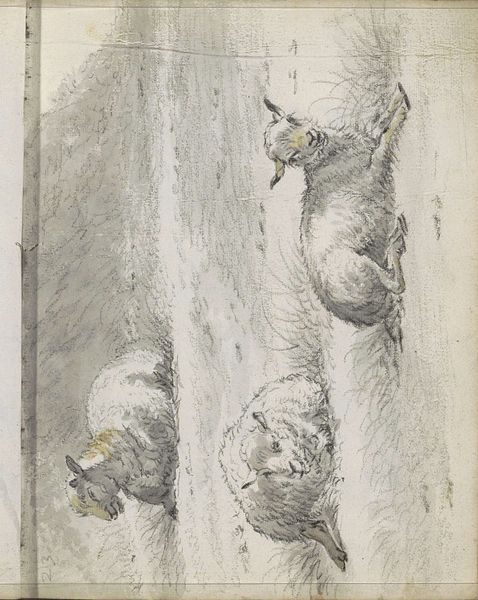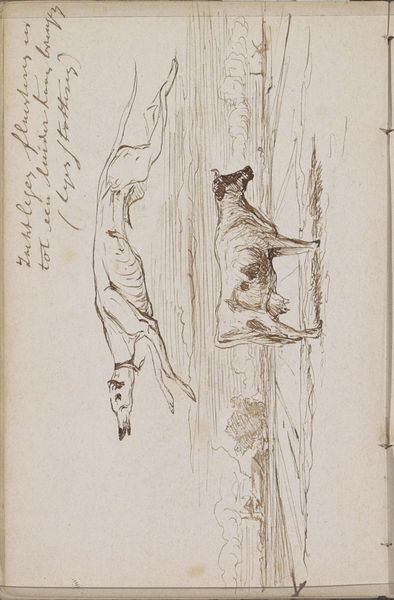
drawing, pencil
#
drawing
#
dutch-golden-age
#
pencil sketch
#
landscape
#
figuration
#
pencil
#
genre-painting
#
realism
Copyright: Rijks Museum: Open Domain
Editor: Here we have "Boerin die een koe melkt in een landschap" – or "Farmer Woman Milking a Cow in a Landscape" – a pencil drawing from 1666 by Cornelis Saftleven. It has a certain understated quality. I'm struck by the contrast between the detail focused on the figures of the woman and cow, and the suggestive landscape, a series of indistinct forms, soft textures. What draws your eye? Curator: The dynamism inherent in the contrasting line weights, juxtaposing precise, almost scientific renderings with broad, gestural strokes to conjure spatial depth. The essence, isn’t it, resides in the modulation of tone, moving our eyes through these visual contrasts across the depicted form. Notice how Saftleven has avoided closure on almost all contours within this arrangement, thereby encouraging our active perceptual participation to engage with the compositional structure. Editor: The lack of clearly defined boundaries, as you mention, pushes our perception past just the visual, creating the sensation of atmospheric presence in a real, tangible space, but... deliberately unformed, maybe? It's a drawing, so it will be less defined, but how much does that speak to meaning? Curator: Perhaps "meaning" presumes an intention, but consider the artist's meticulous rendering and application of formal elements as his primary focus. The atmospheric qualities you noticed are only, perhaps, a derivative effect of that initial, primary concentration upon design elements and visual relationships, their own independent dynamic within Saftleven's compositional framework. Can we locate any instance within this image of internal disjuncture in the deployment of this drawing’s visible artistic methods? Editor: I guess the fenceposts are maybe a little awkwardly rendered? Like a shorthand that’s almost too hasty relative to the woman and the cow? It pulls me out of that space. Curator: Precisely, it’s almost disruptive—drawing our awareness directly to Saftleven's choices in material deployment! What initially struck us, is less the "subject" and rather his handling and control of his media's inherent formal capacities and capabilities. Editor: So it's like, through the slightly uneven application of his methods that Saftleven reveals not a subject, necessarily, but a study of artistic language. The work reveals itself through line. Curator: Indeed. A linguistic awareness – through vision. We started seeking some elusive meaning in content, perhaps overlooked what, evidently, proclaims a more foundational set of authorial priorities.
Comments
No comments
Be the first to comment and join the conversation on the ultimate creative platform.
